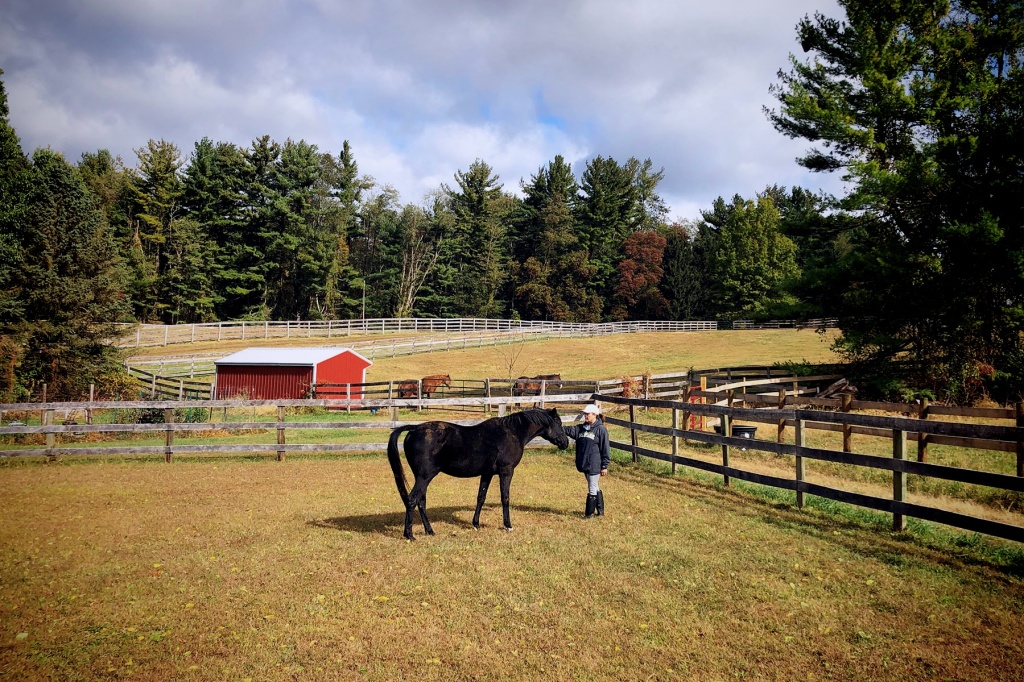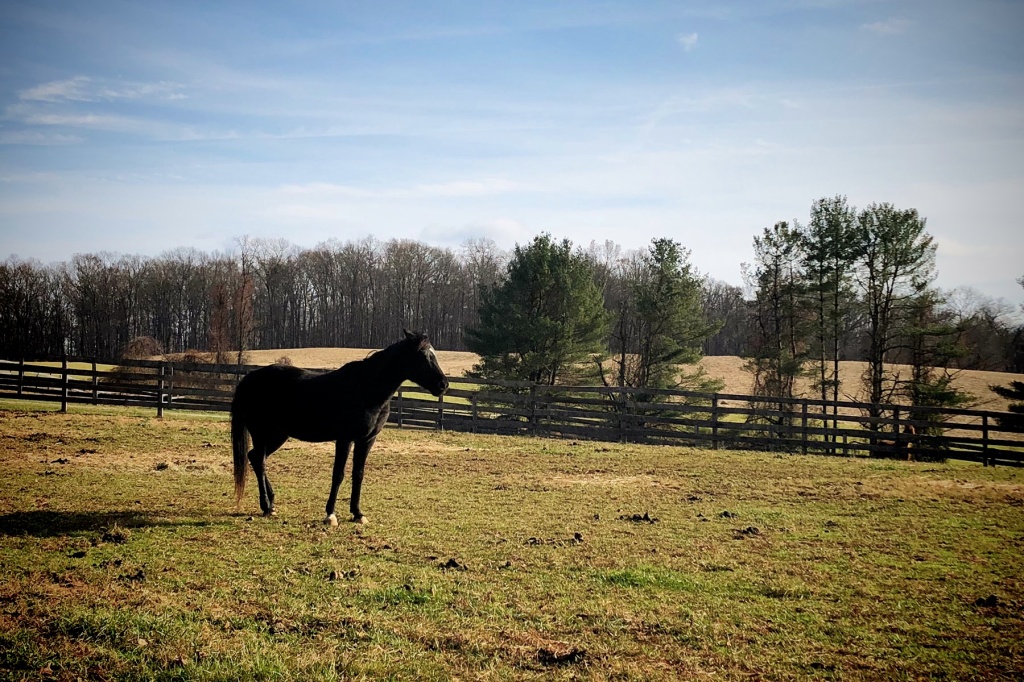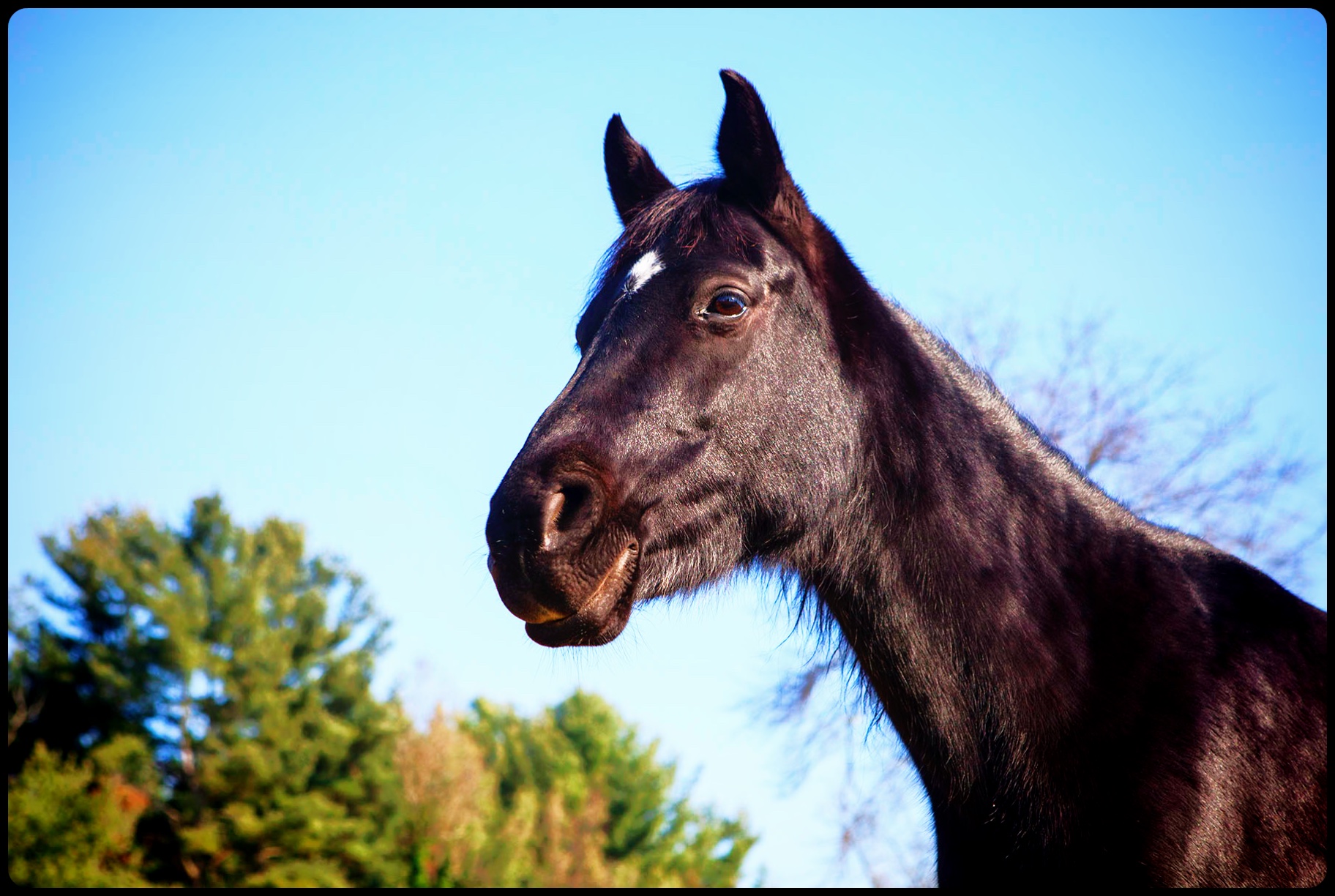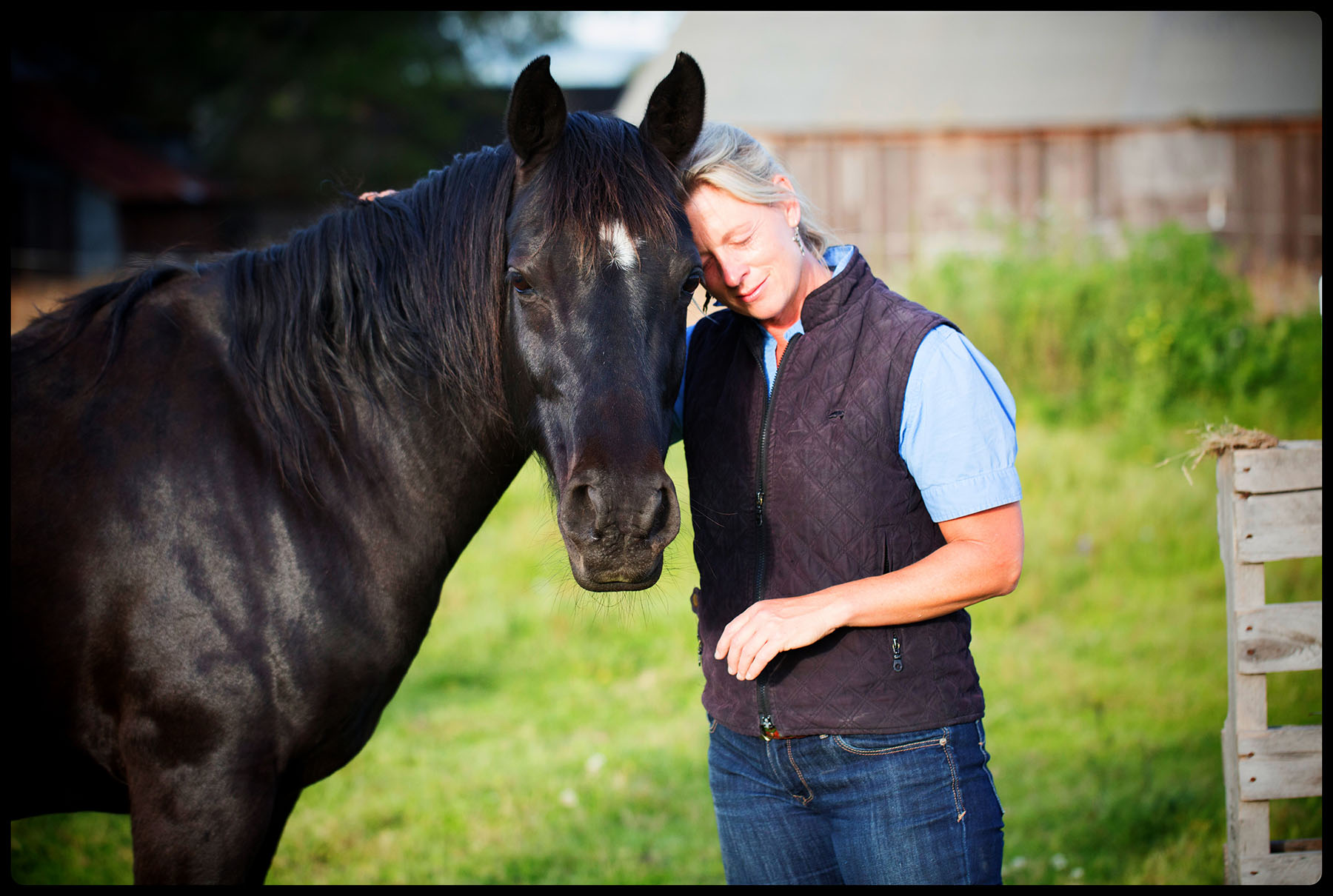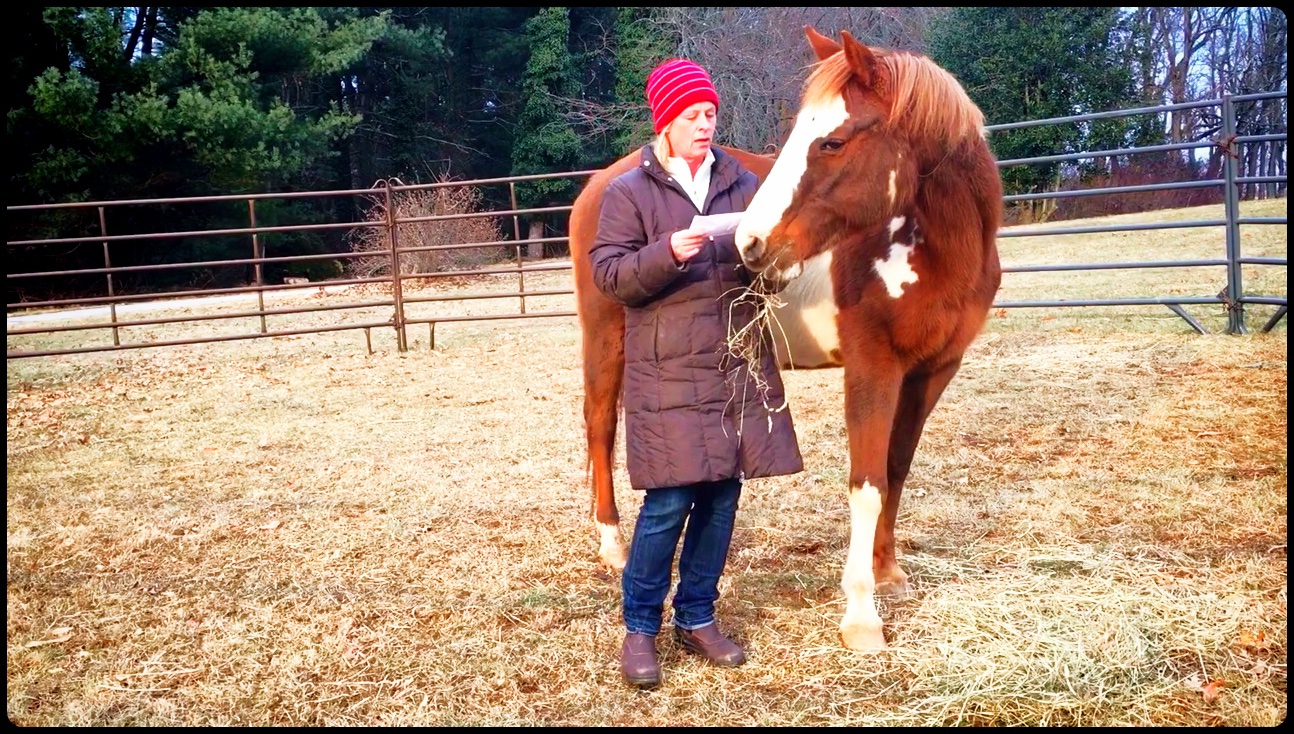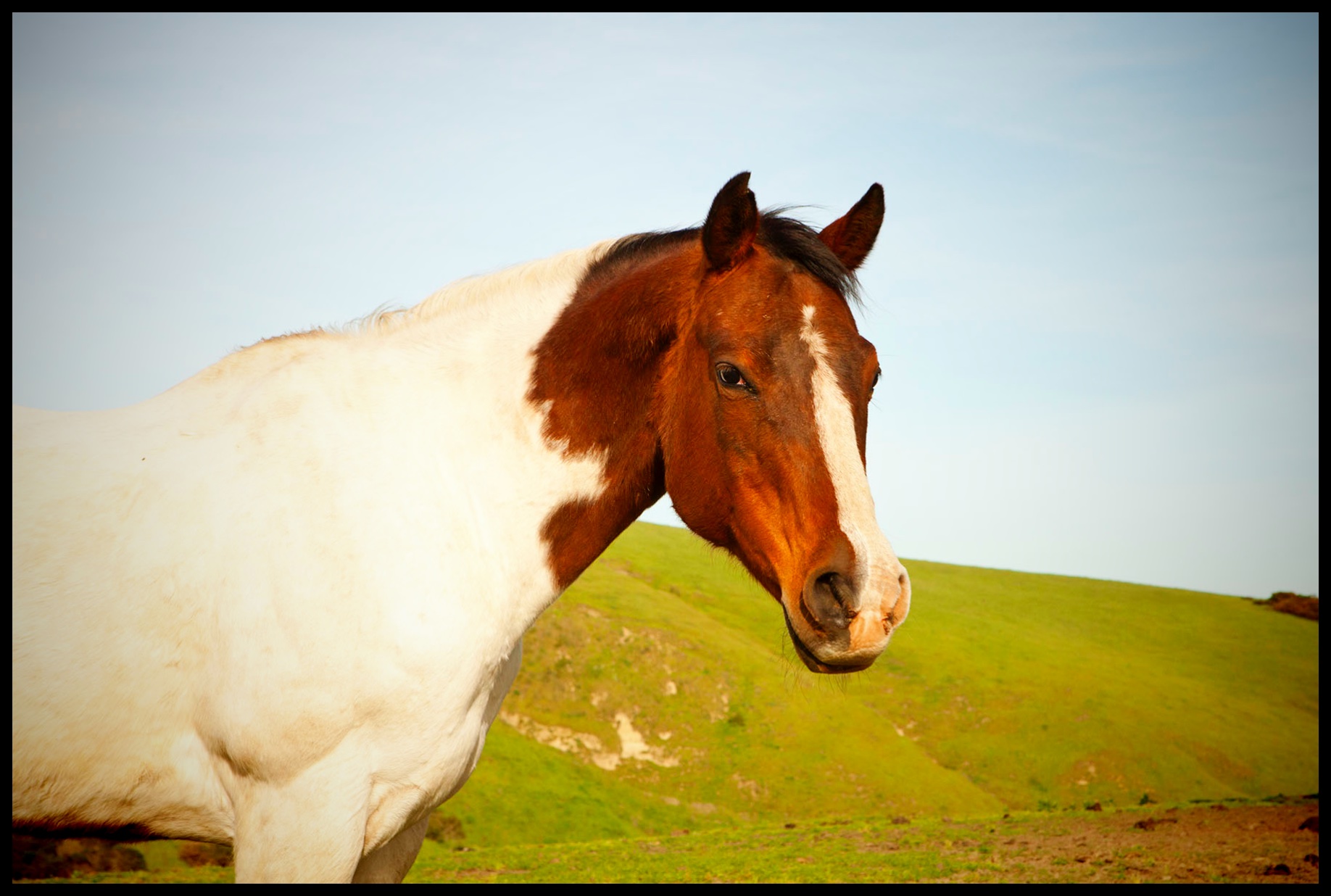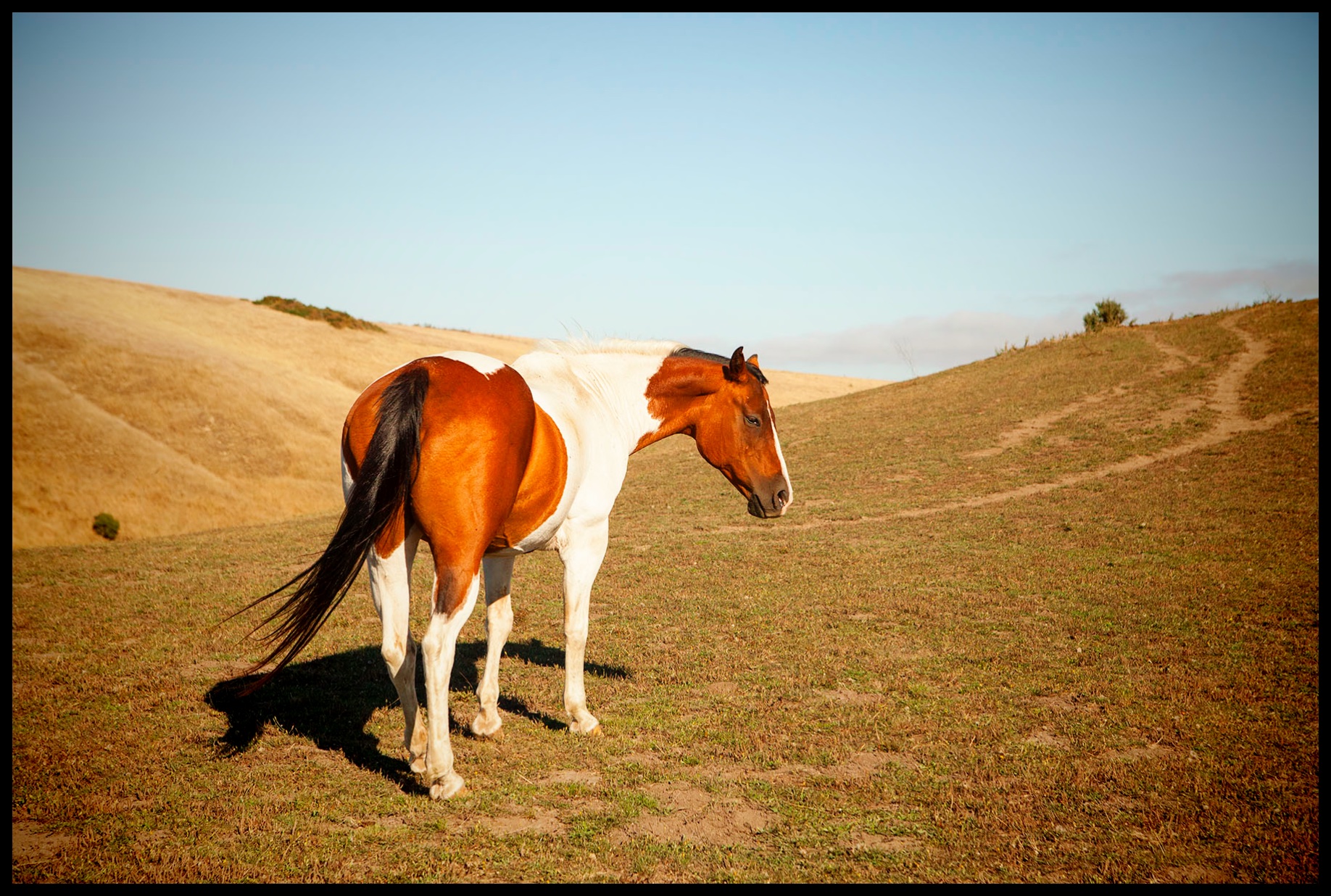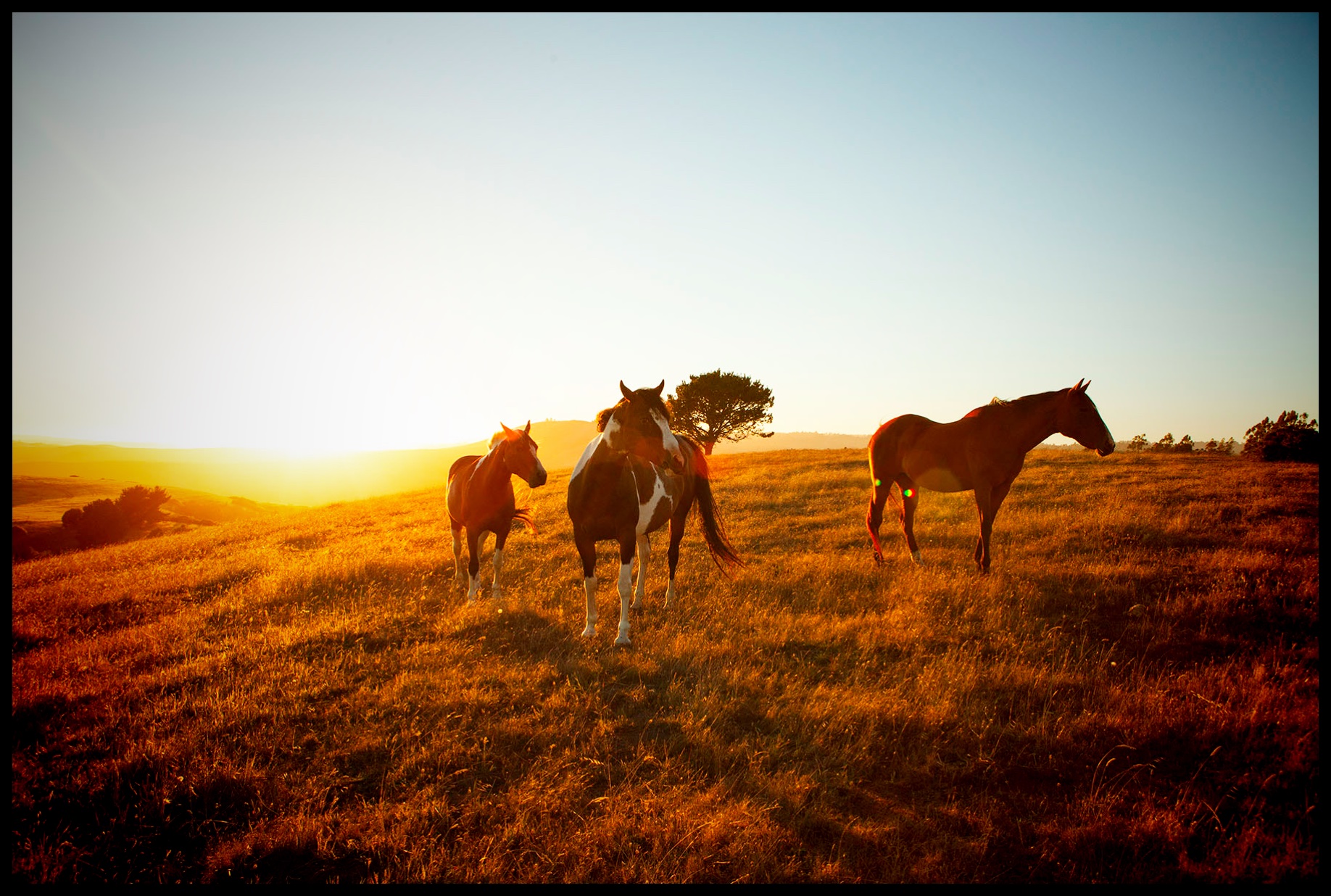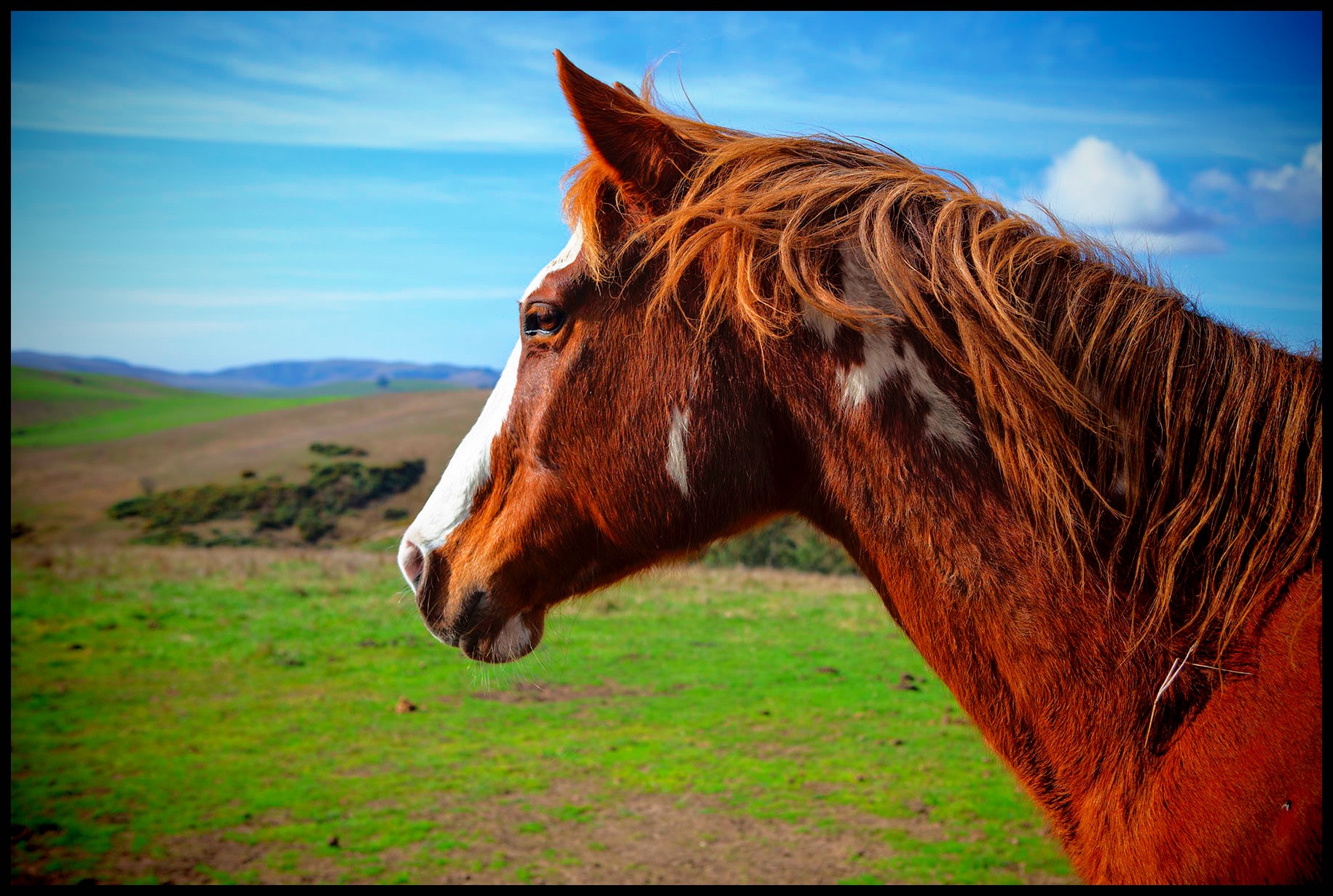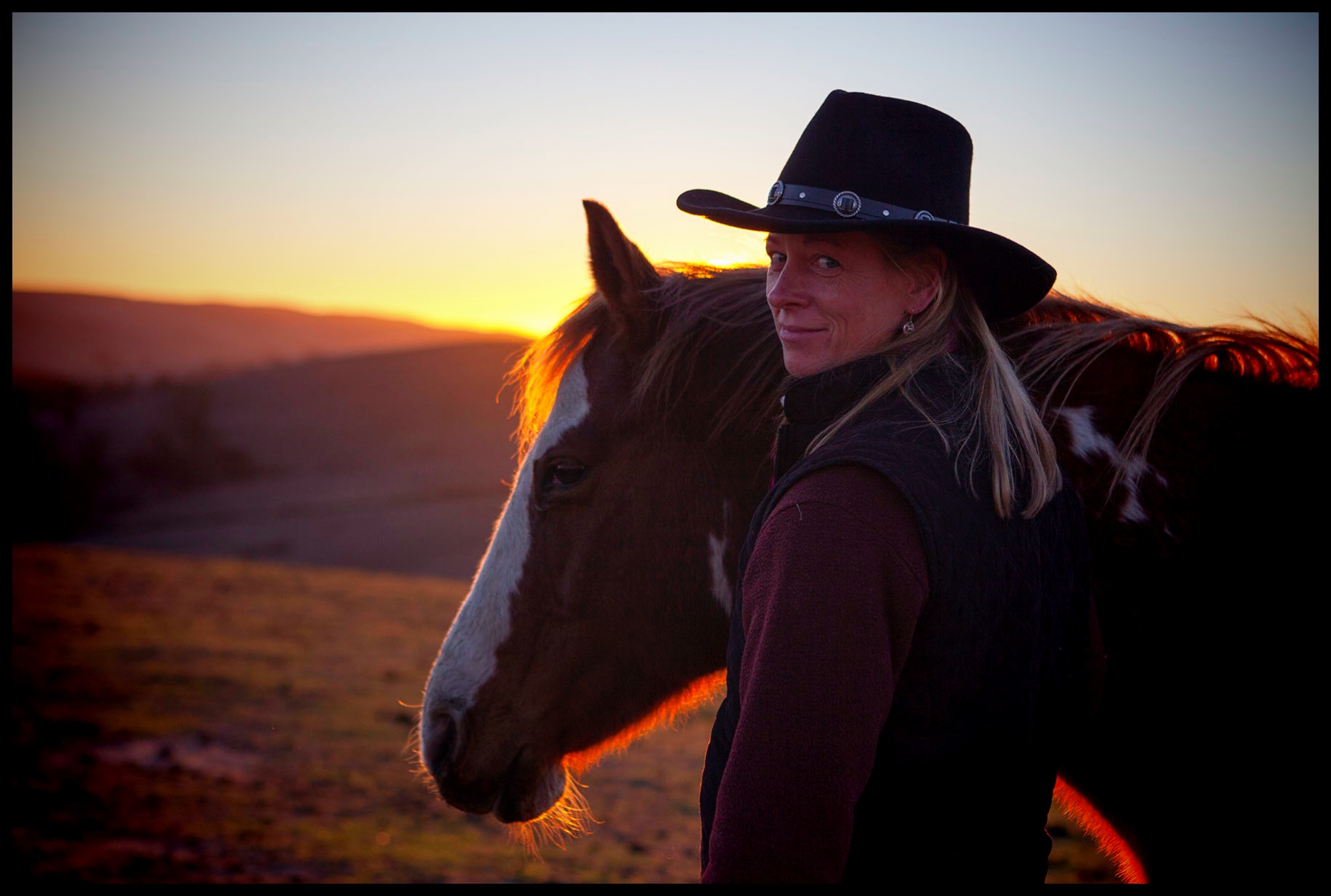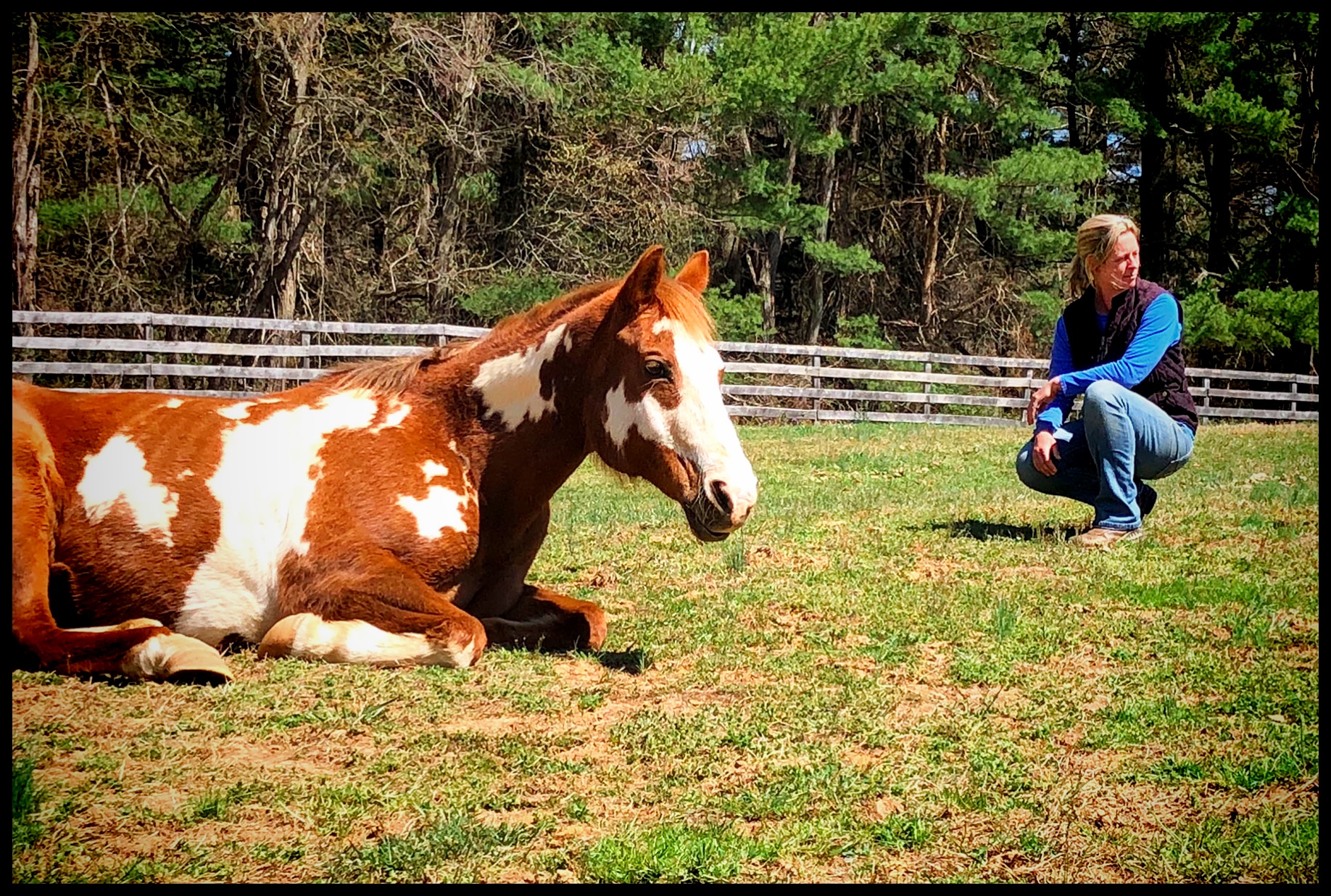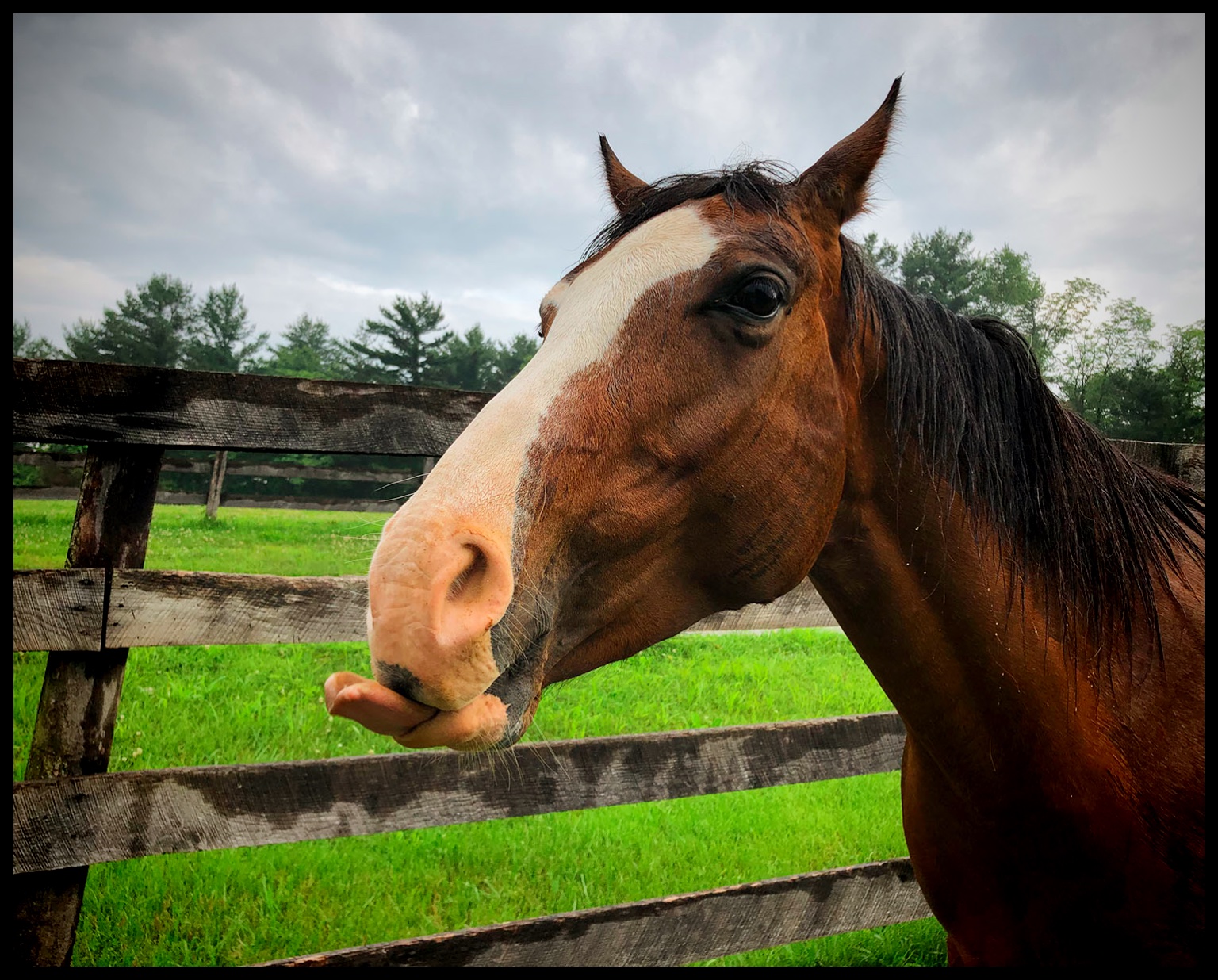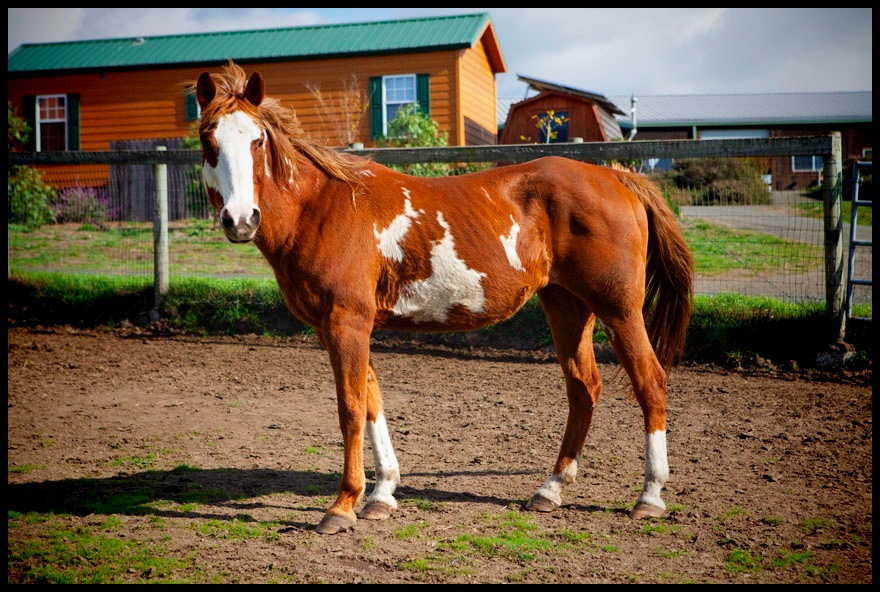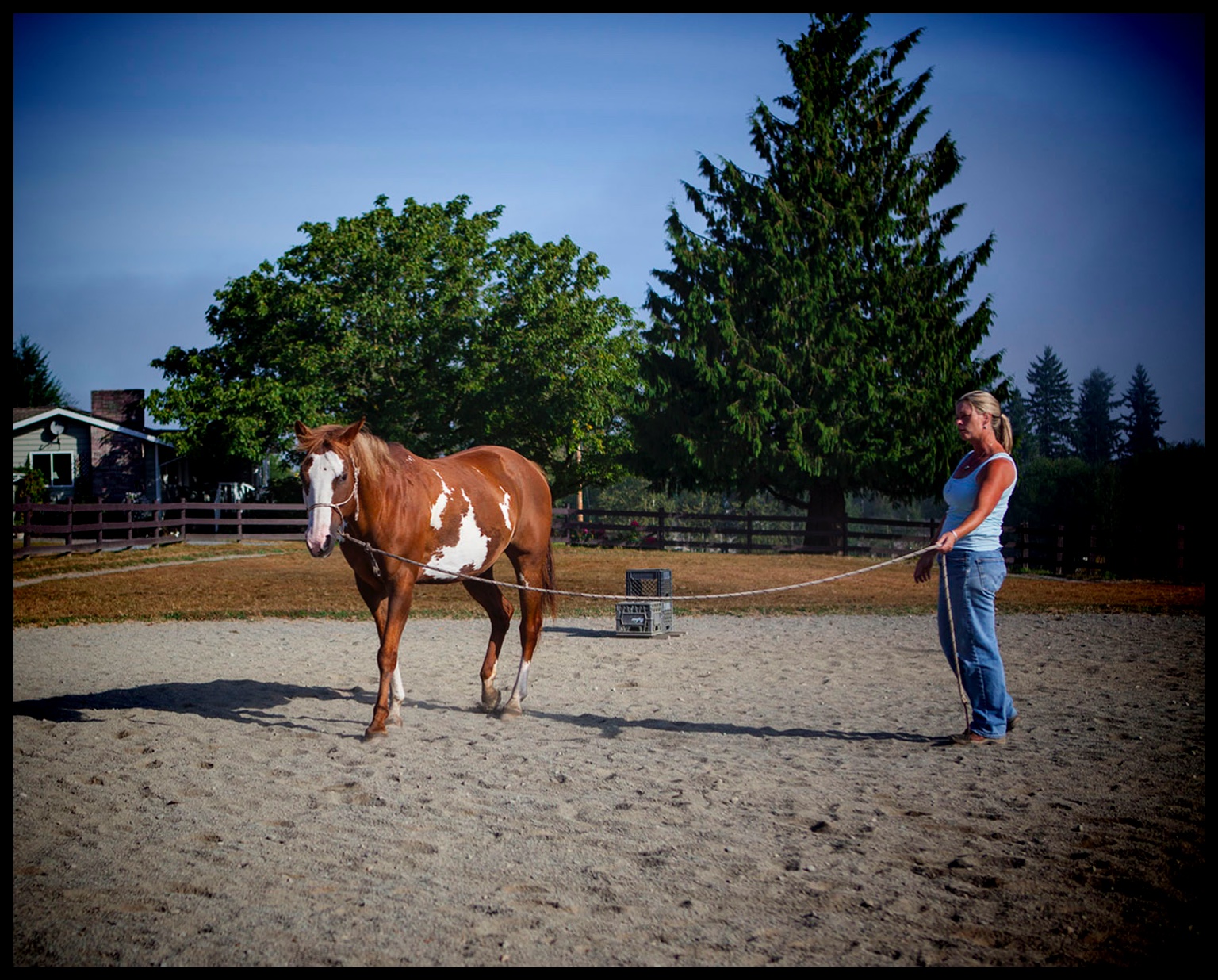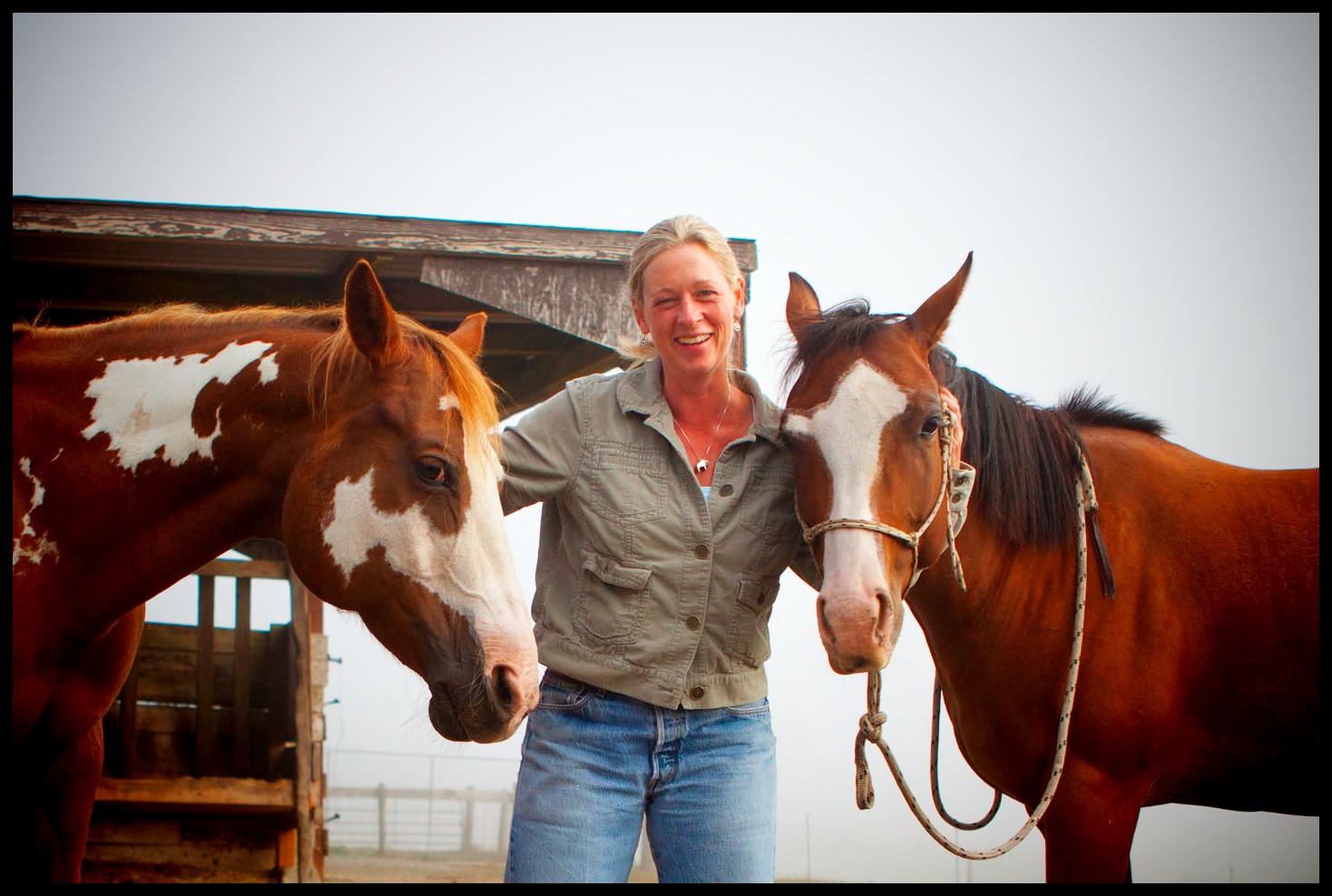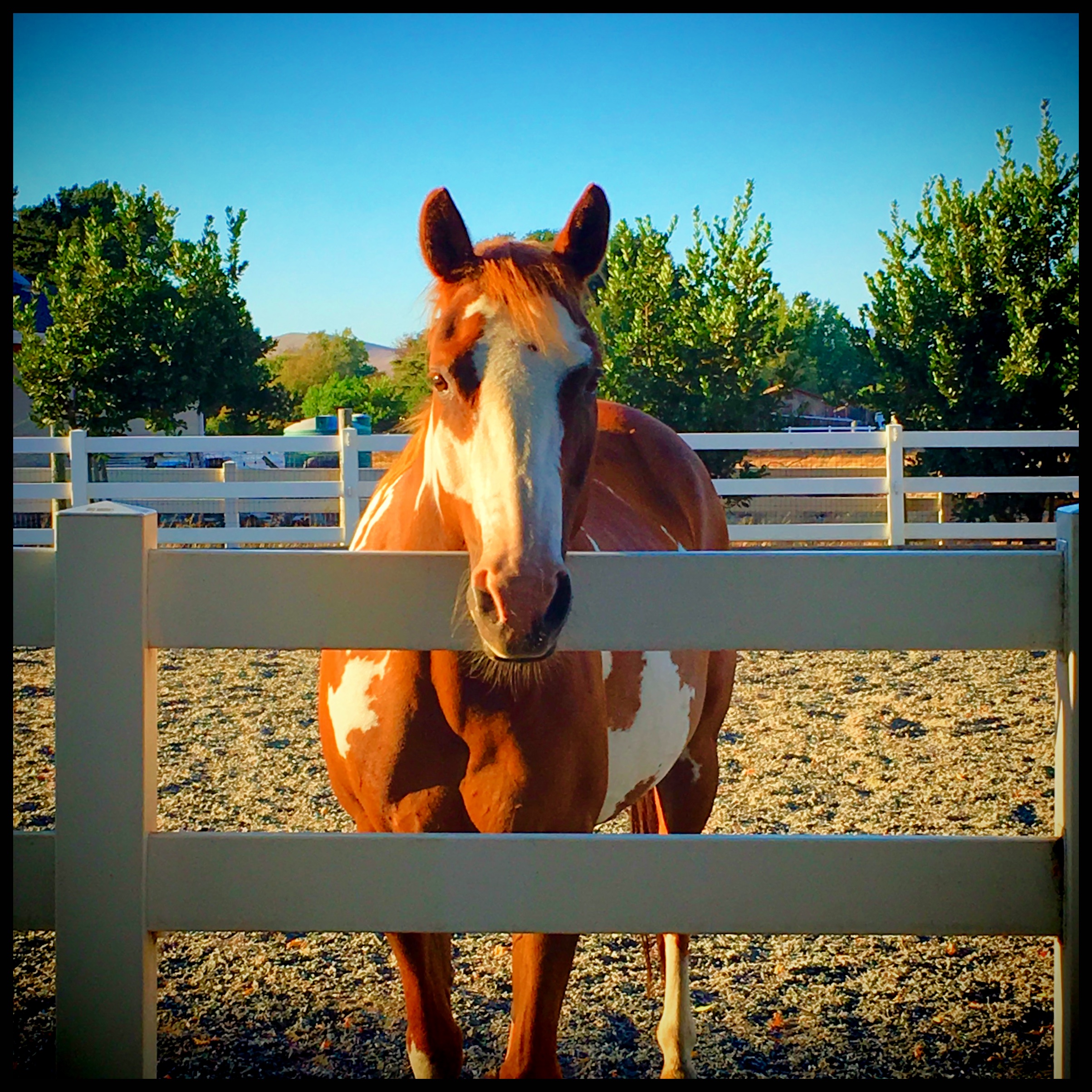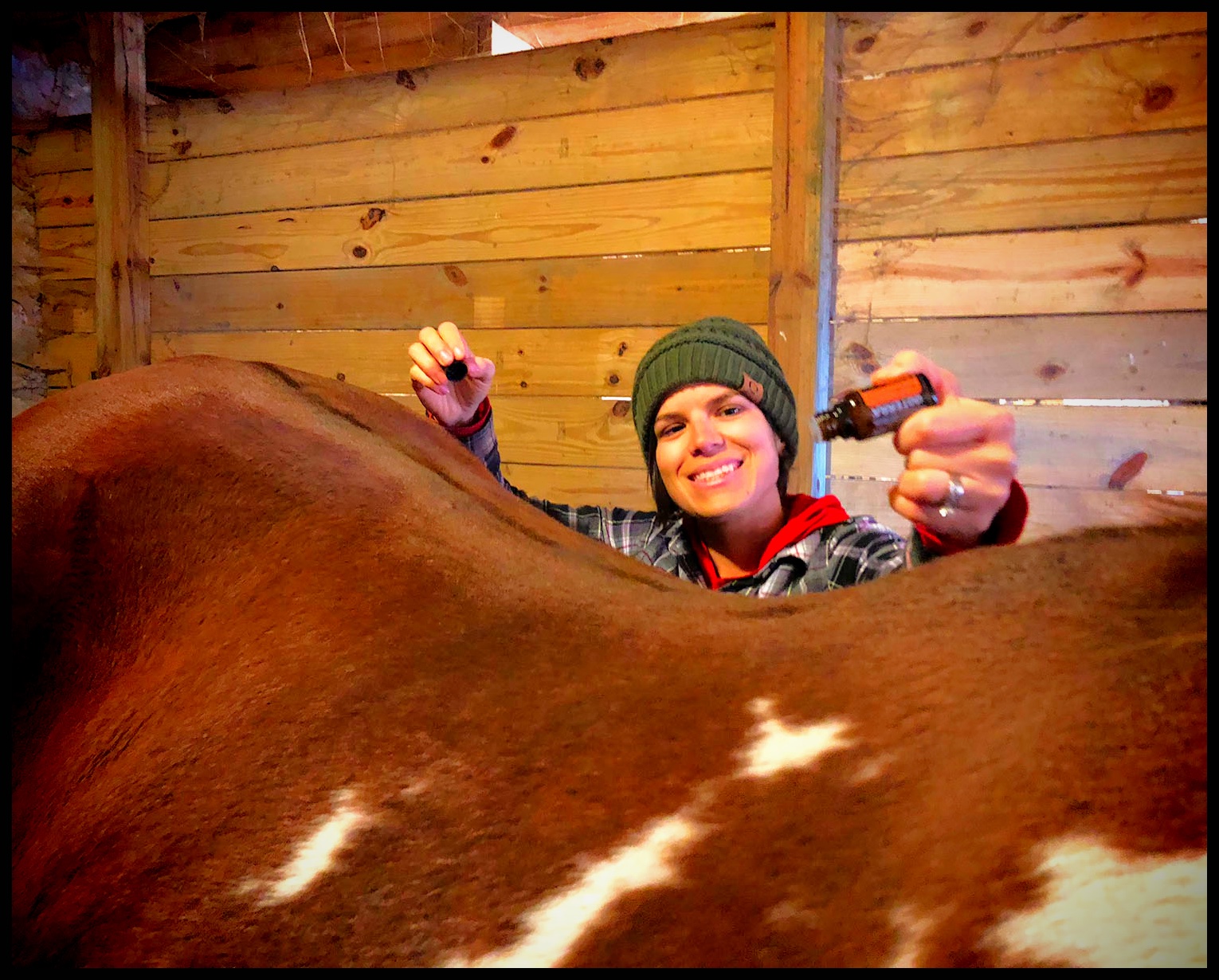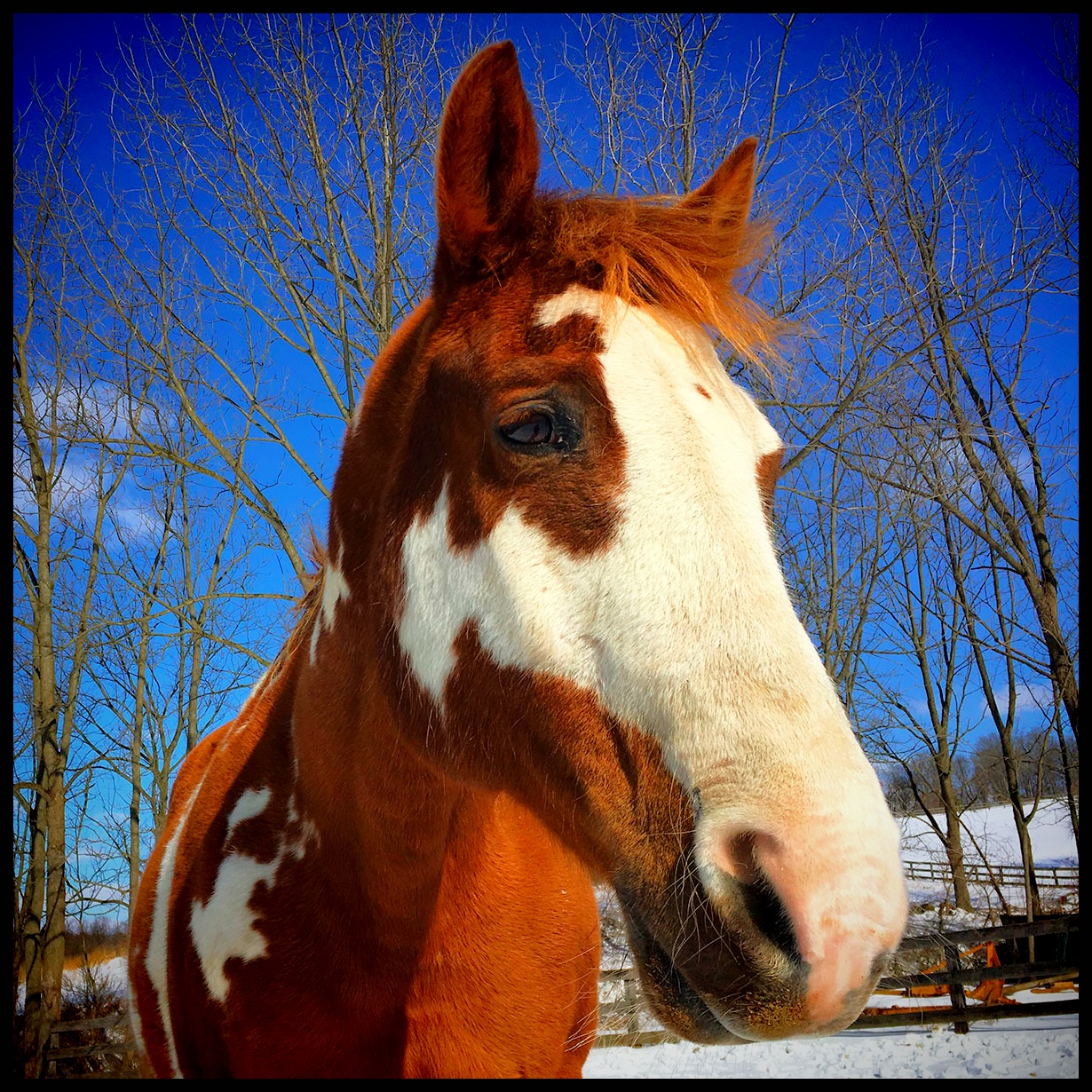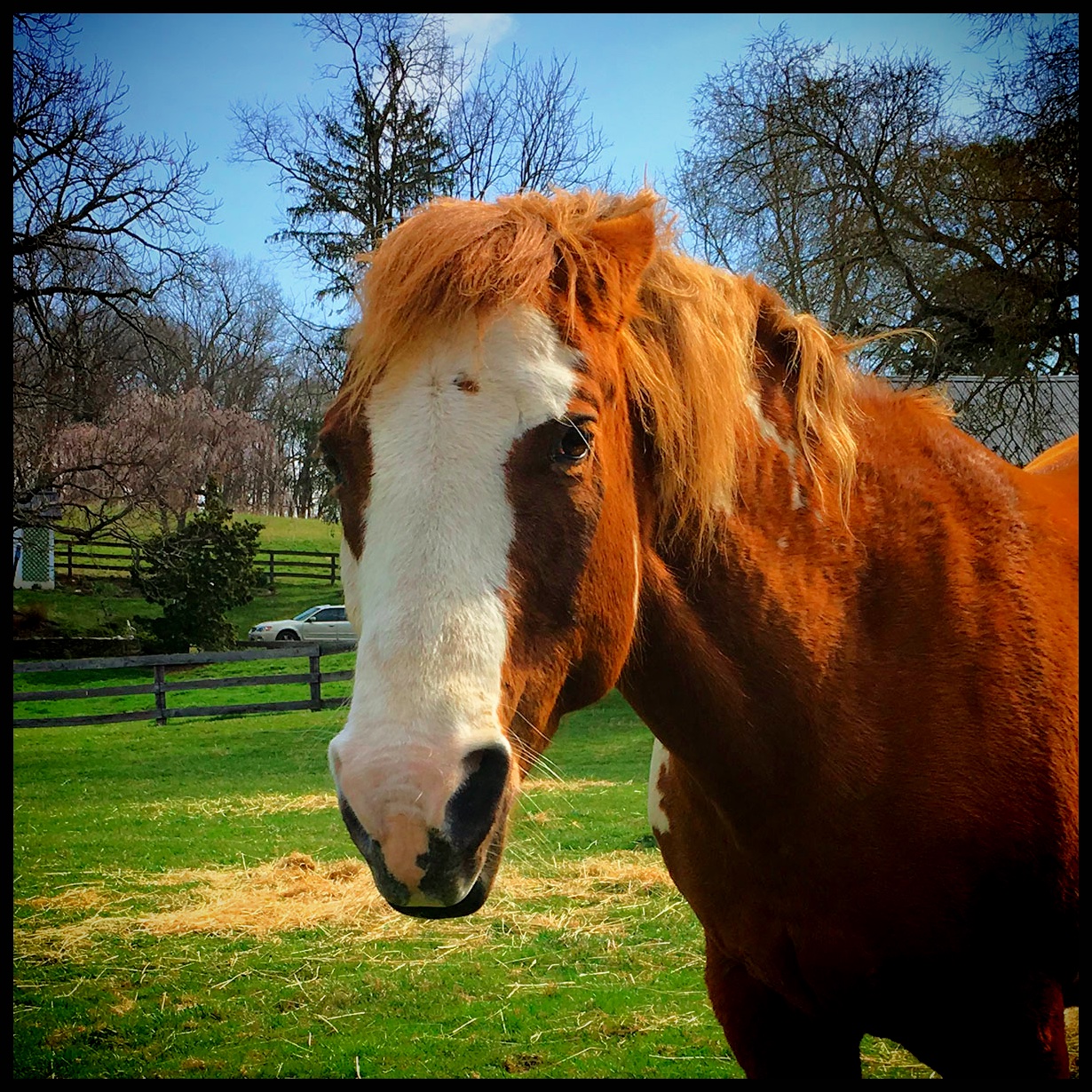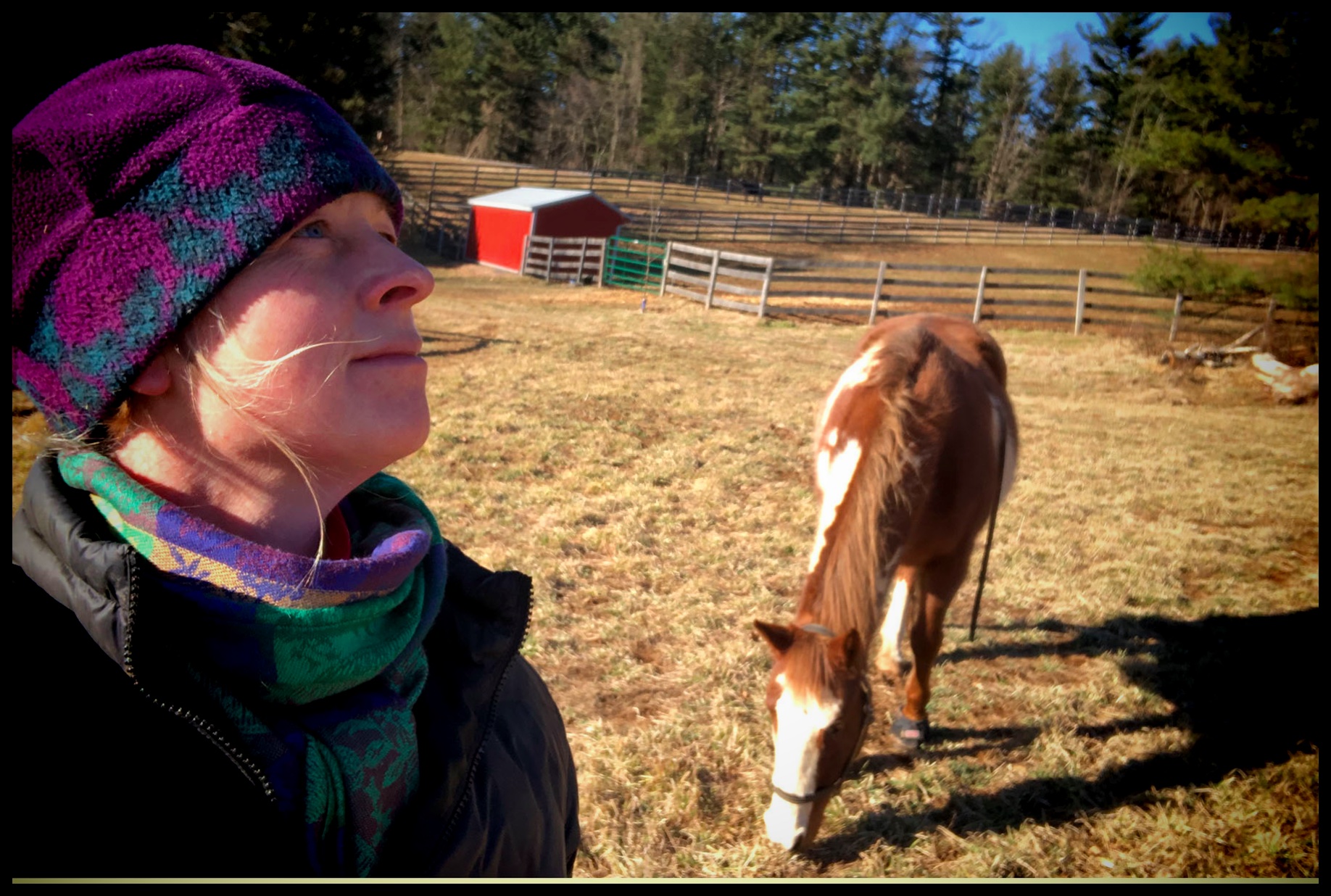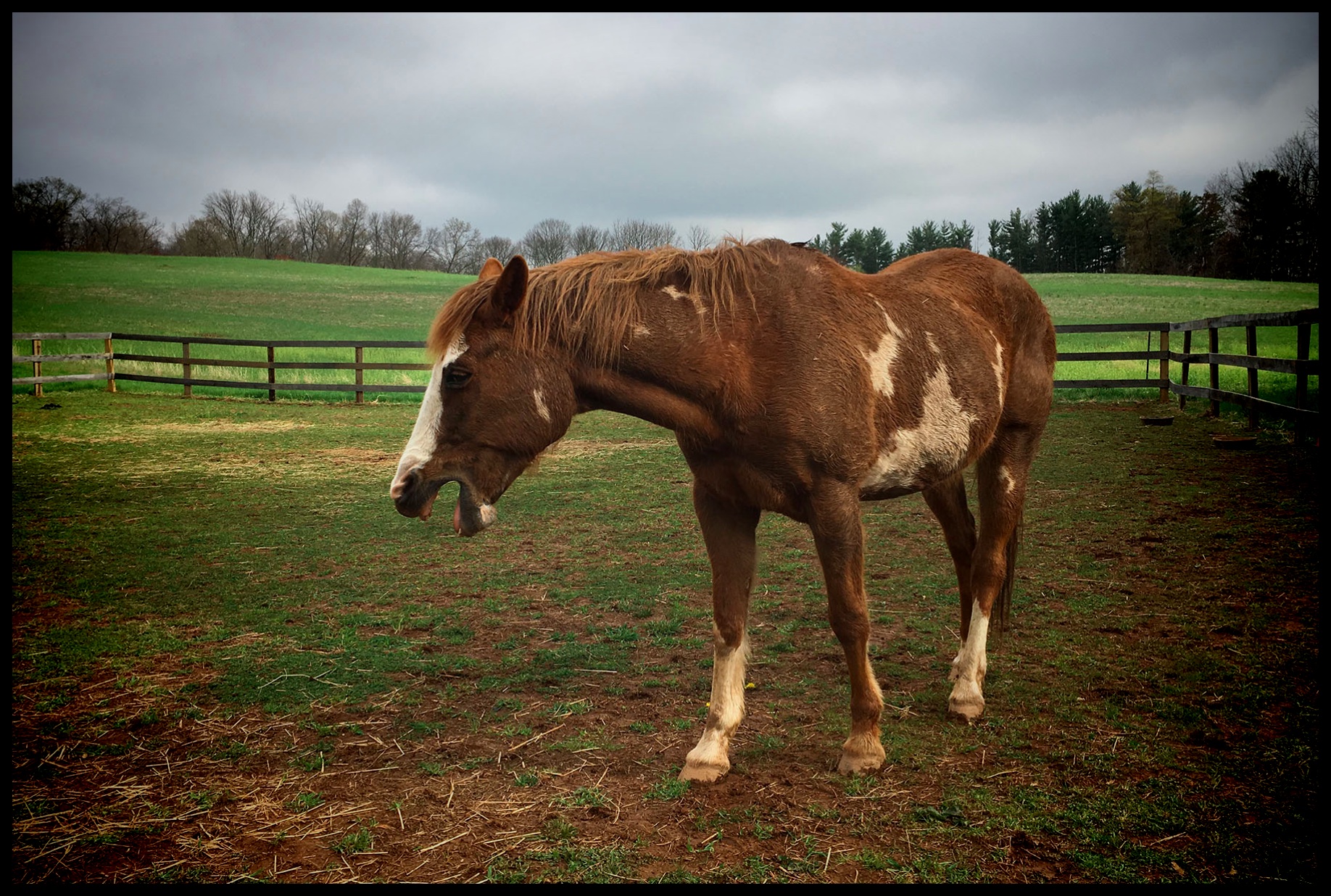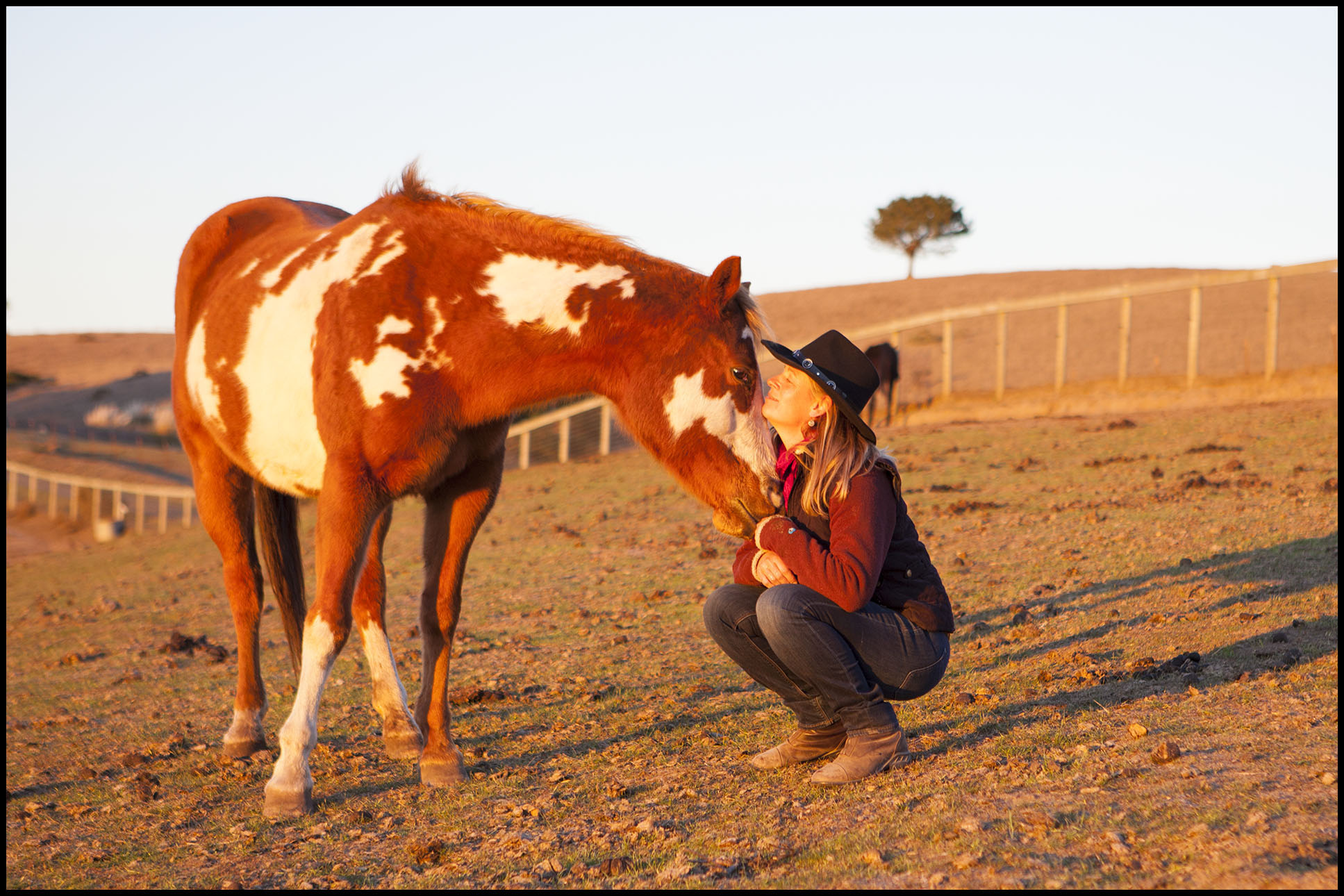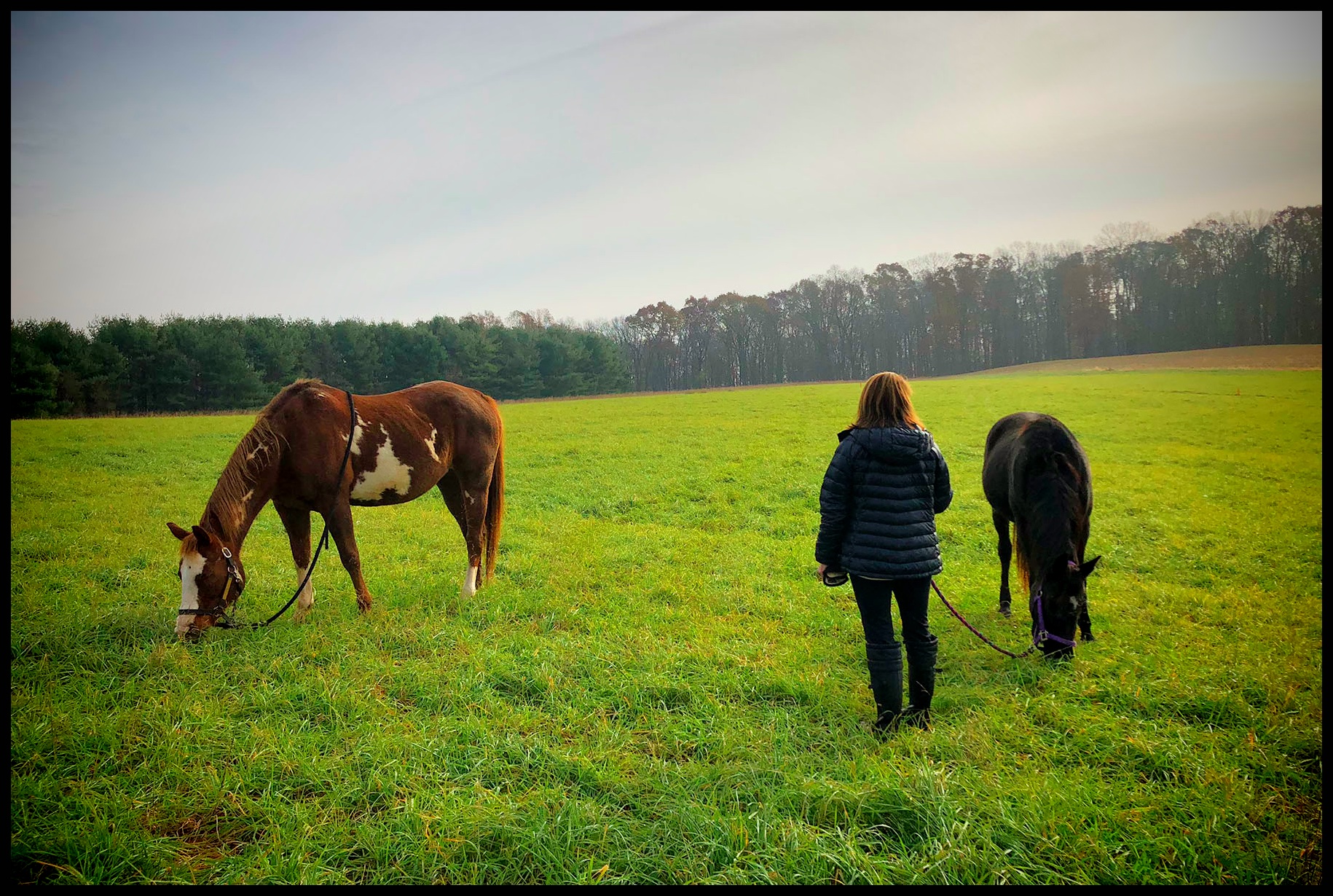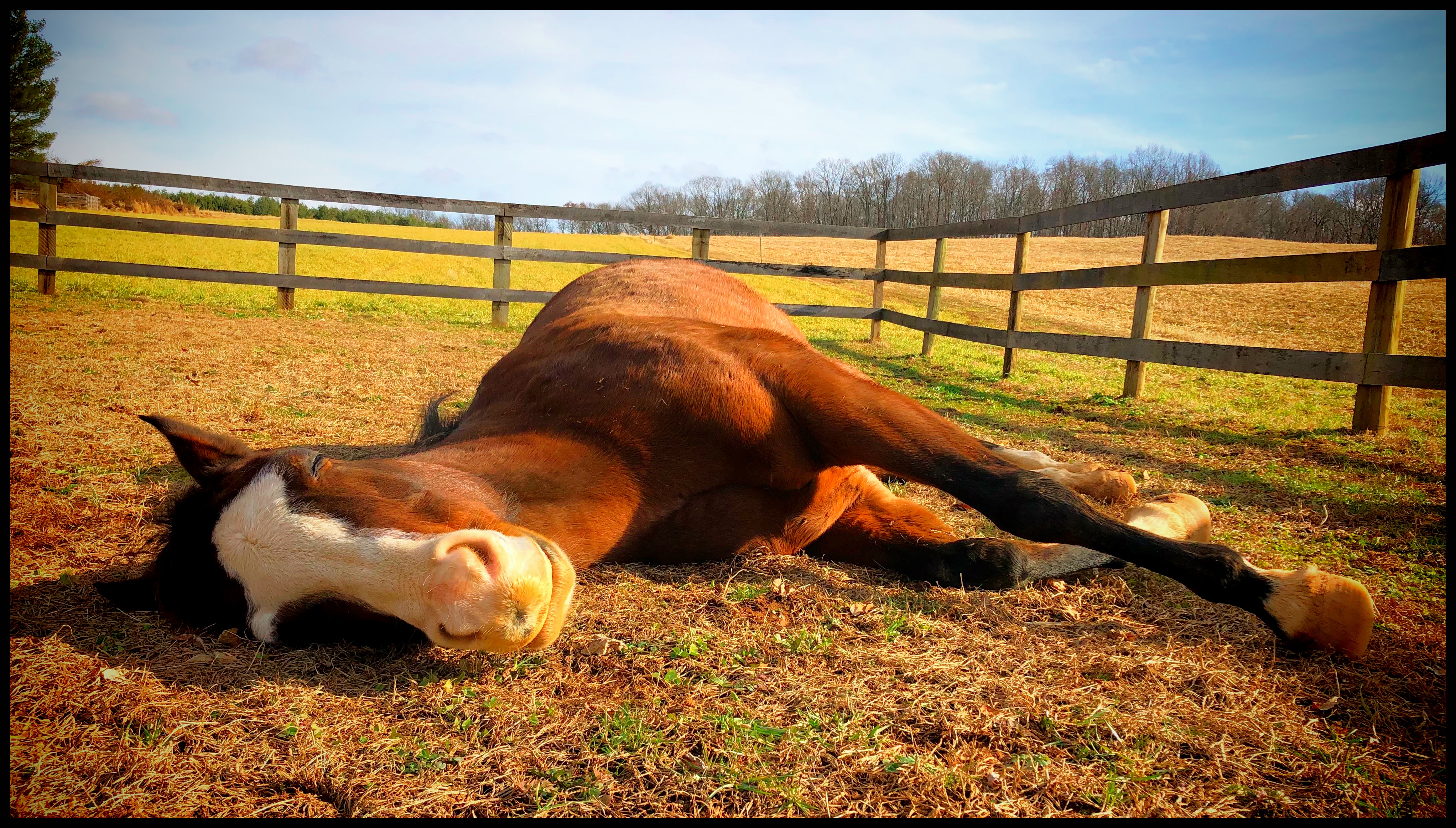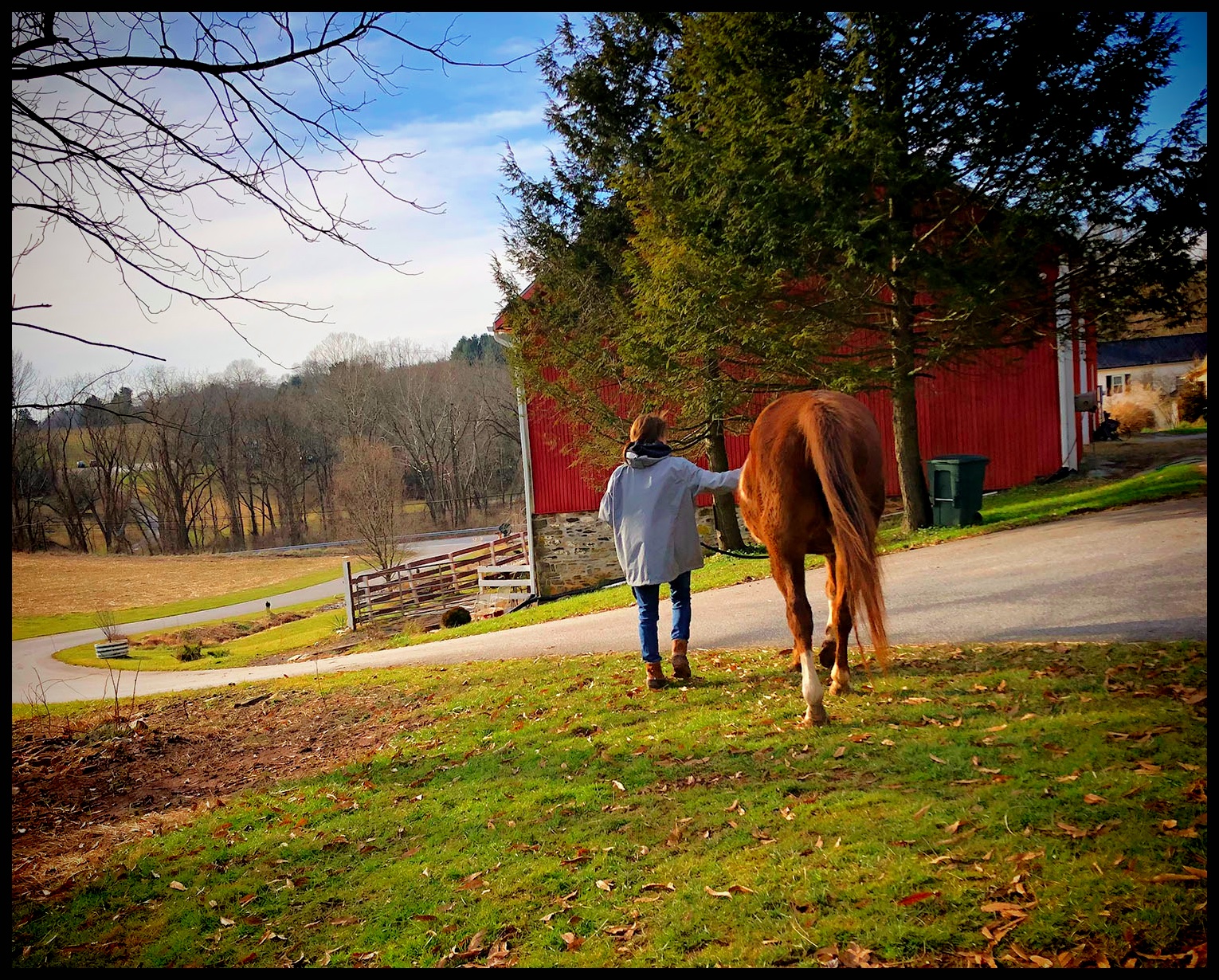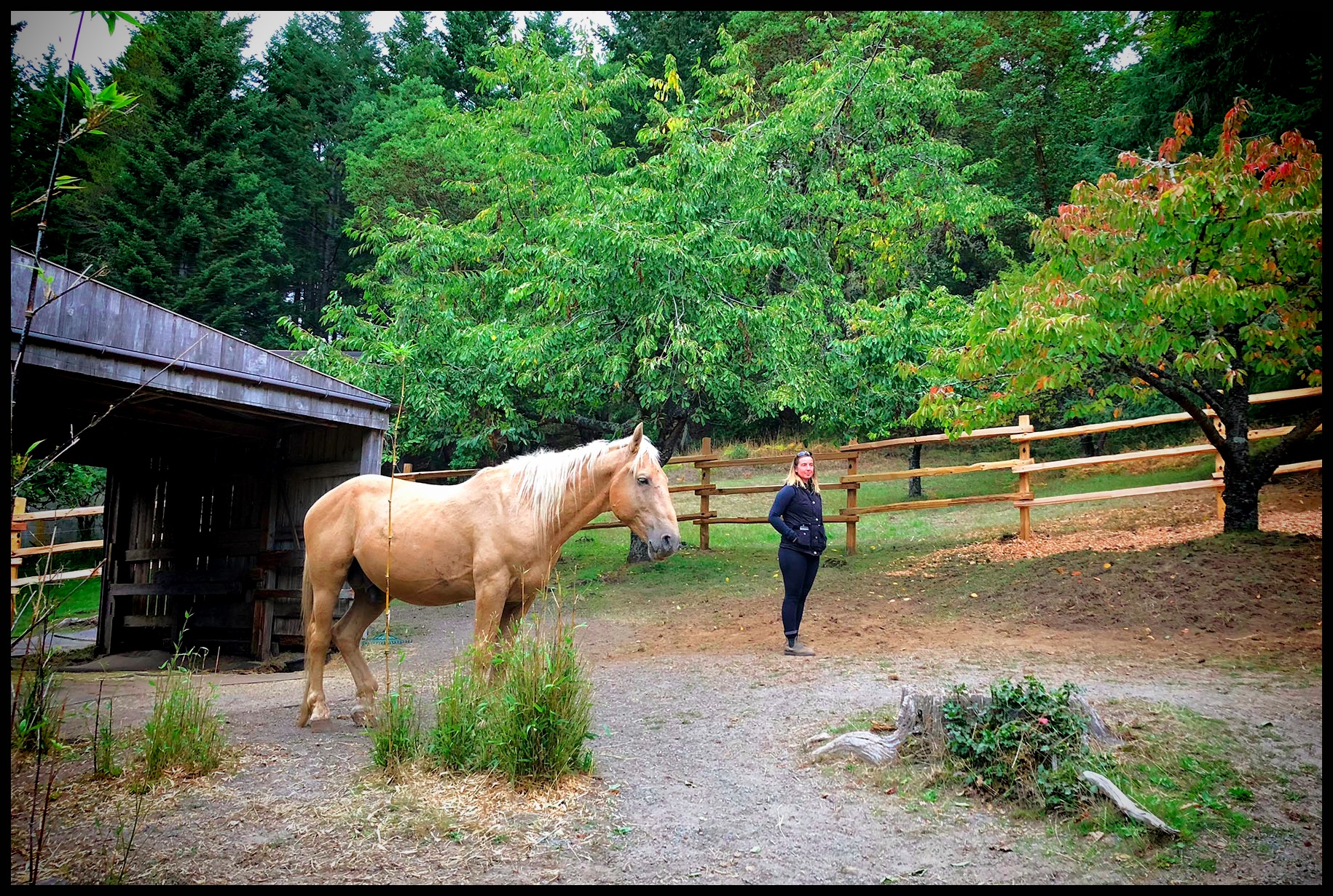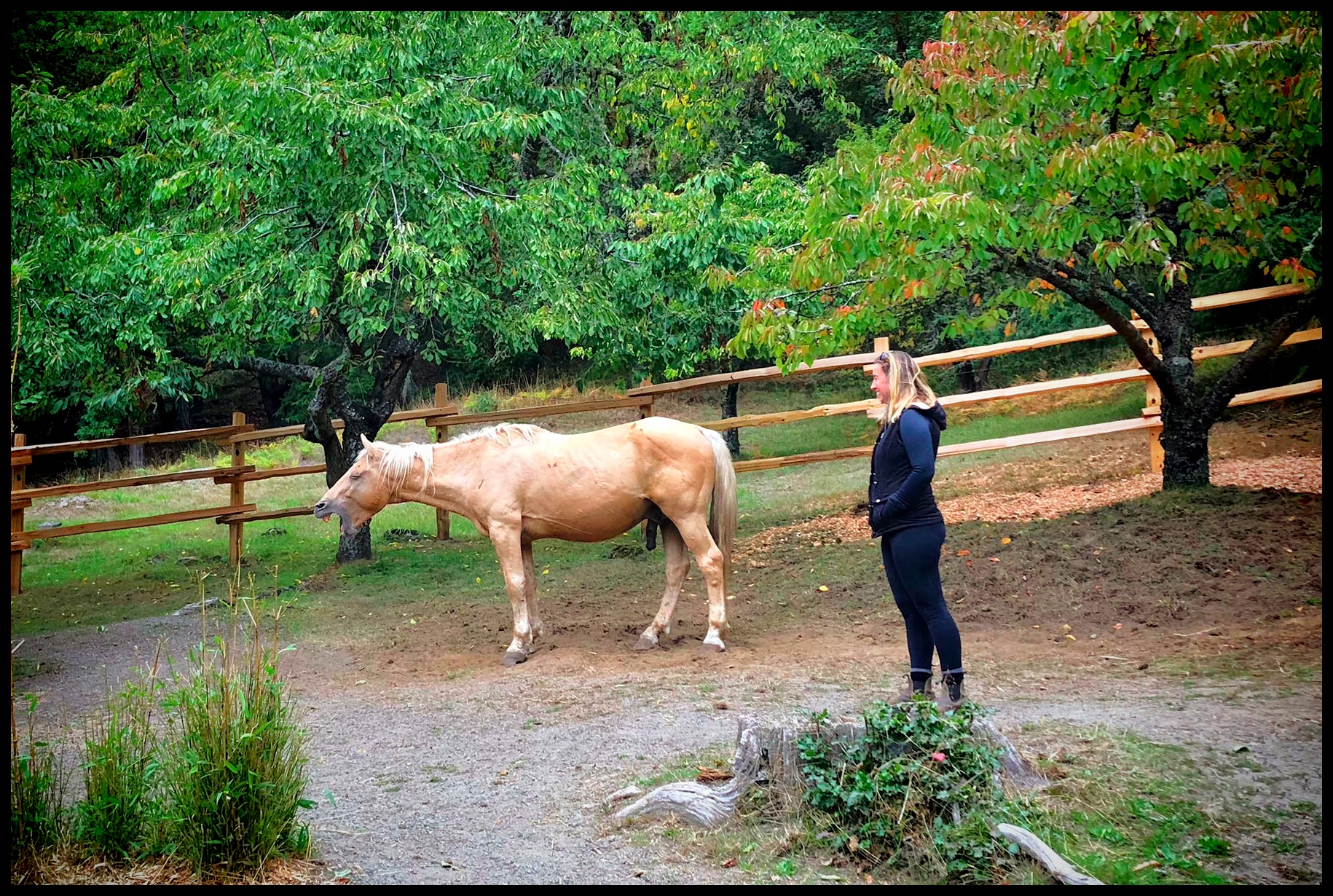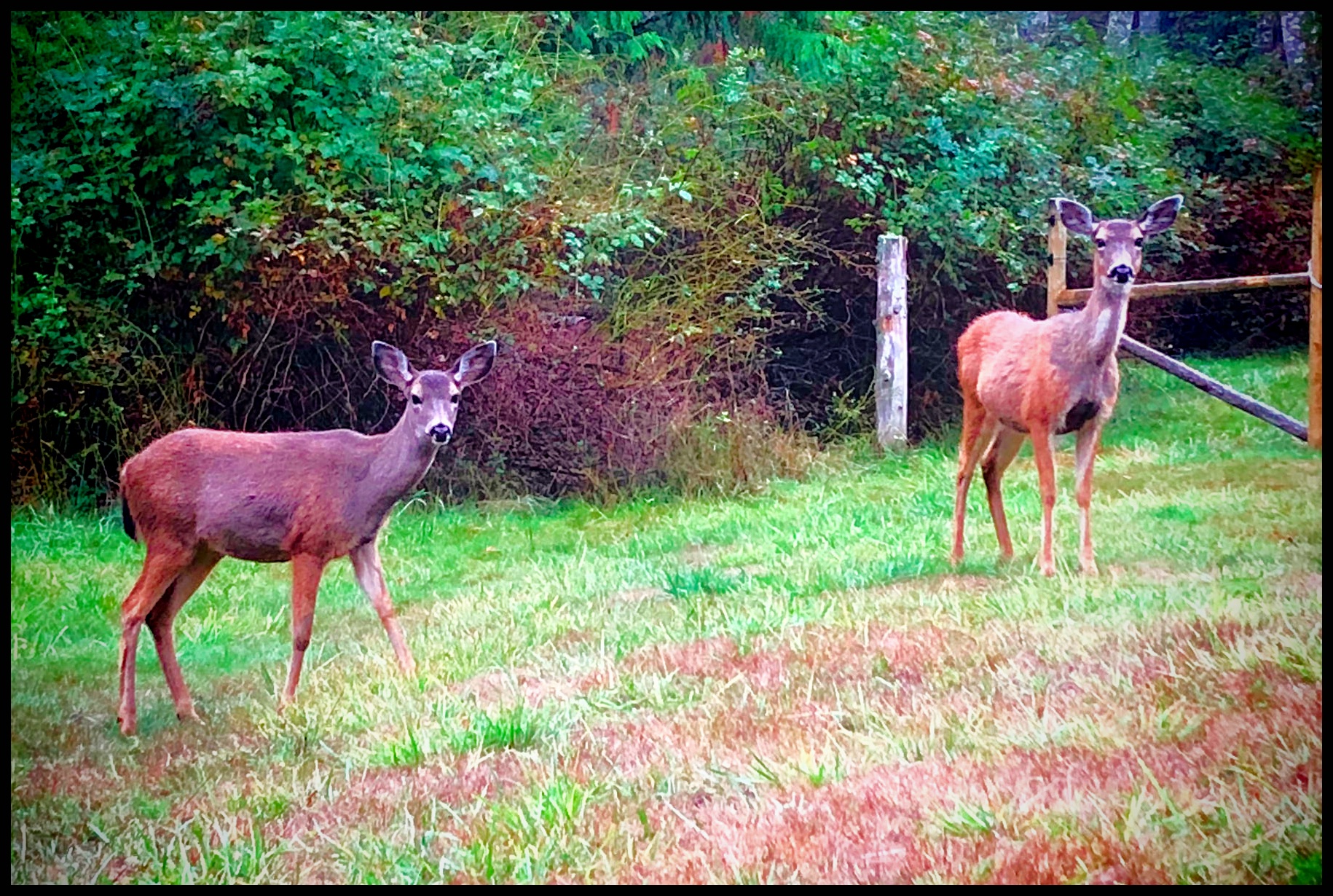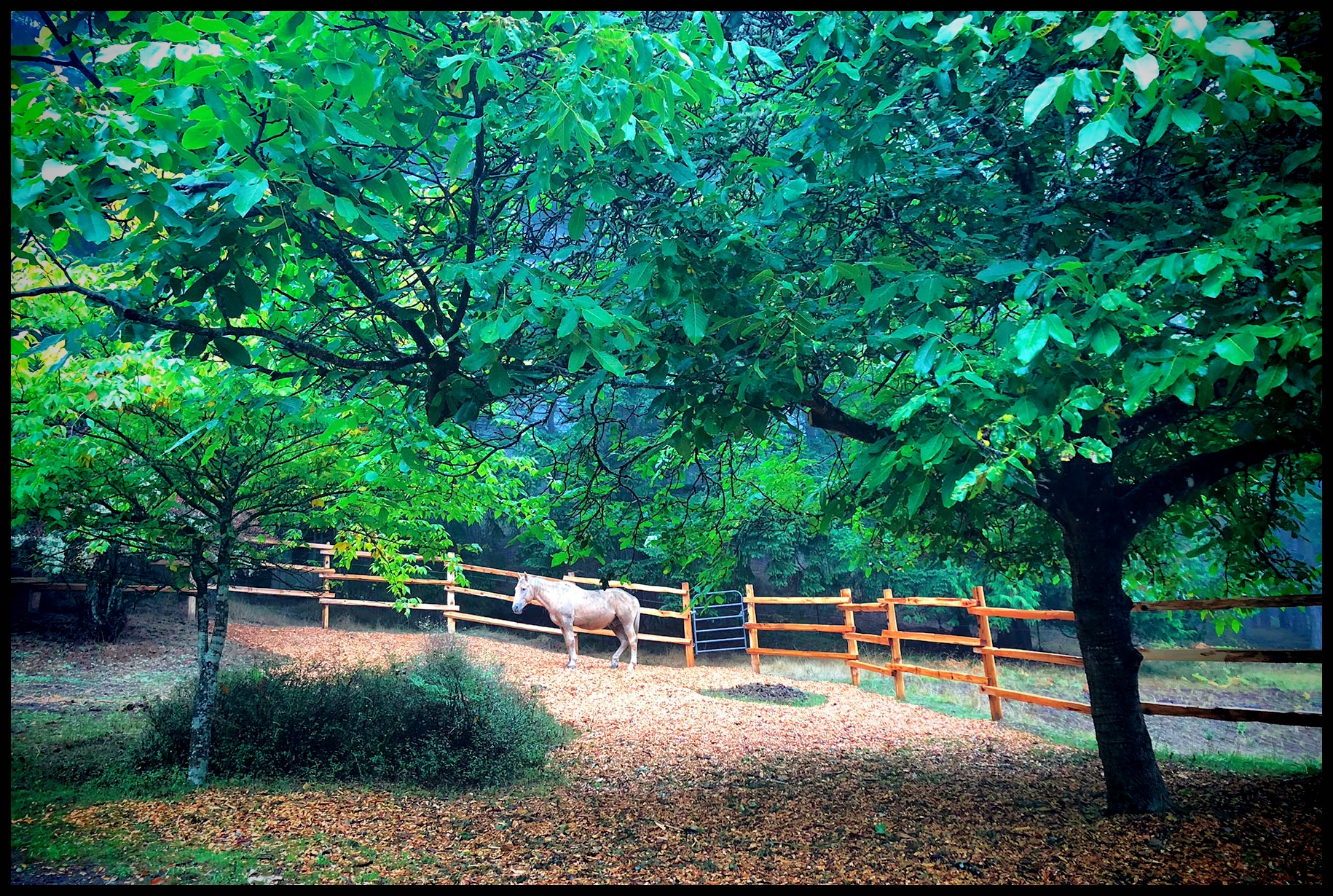Follow the Horses
There I was in a hotel bar in Texas, at a table full of rock stars. Seriously, rock stars. If I was a folk-rock singer, the career I secretly wished I could have had since college, it would be something like hanging out with Joni Mitchell, Sheryl Crow, Bonnie Raitt, Stevie Nicks, Bob Dylan and Eric Clapton. I still have my guitar in the basement somewhere, but I chose the other sure-to-get-rich-and famous career path: working with horses.
I was at the 2023 Journey On Podcast Summit, hosted by Warwick and Robyn Schiller, and that particular evening, I was listening to exciting thoughts and ideas bounce around and across the table with my colleagues, Hallie Bigliardi and Amanda Kent, our teacher and founder of Equine Guided Education, Ariana Strozzi Mazzucchi, EGE colleague, mentor, and extraordinary trick rider and trainer, Kansas Carradine, legendary horseman and author, Felipe Leite, and the host and paradigm-shifter of horse training, Warwick Schiller.
Maybe it was the recent Covid years of being in small groups only, maybe it was too strong of a gin and tonic, or maybe I was simply unprepared for the sheer intensity of the energy present at this gathering of some two hundred fifty passionate, dedicated people coming together to share and learn the ways in which we can make this world a better place for people and horses… but whatever it was, I was suddenly overwhelmed and in need of air and space.
Excusing myself to step outside as gracefully as one can from the middle spot on a crowded bench seat, two or three different people asked if I was okay and if I wanted someone to come with me. “Oh, no, thank you,” I reiterated, “I just need some air and will be right back.”
And with that, I strode out the nearest door into the festive night on the downtown San Antonio street, so bright and loud with merry-makers that I did not hear the alarm I had set off using the emergency exit.
I had not seen a horse since I had arrived in Texas two days prior, so it felt oddly surprising to walk right into an intersection with a horse and carriage at the front of all four converging lanes of traffic. These carriages were aglow with colorful lights, the horses’ manes and tails beautifully brushed and braided, and one horse even had hooves painted a deep pink with glittering sparkles. The four-year-old me would have thought she had walked straight into heaven.
The present day me walked straight through the intersection and turned to walk in step with the first horse to start moving forward as the light changed. What an opportune way to take a walk and take in the night air – with a horse. It did not even cross my mind that the carriage driver or his passengers might find it somewhat bizarre that a strange woman was walking along with them on their evening ride. I was focused entirely on my breath, my steps and the horse.
The horse was walking methodically, not particularly fast nor slow. He kept an ear on me, and when we stopped, he would turn his head toward me, and I would nod back. When we turned left, I would be in the middle of the street. I suppose walking alongside a horse is an excellent form of protection from both cars and questions. Not a soul spoke to me, honked at me, or even seemed to see me at all.
At some point, I began to sort of come back to earth, and thought I ought to get back to the hotel. “Always thank your horse,” was the main thing I remembered from my first riding lessons, given to me by my cousin, Mary when I was five and she was fifteen. So, I silently thanked him, gave him a bow in appreciation, and heard him sigh loudly, so I hopped from the street to the sidewalk and reached for my phone to check the GPS for how to get back.
Only, there was no phone in my pocket. I had left with nothing, no money, no ID either. One of the life skills I do not possess is having a sense of direction, so I almost laughed out loud at my situation. I felt oddly free. Perhaps more free than I had in a long time. I opted to take the stairs down to the Riverwalk, to see if I might recognize some restaurant or landmark down there that would help me find the hotel.
The very first, and only, person to speak to me on my journey outside was a woman with long dark hair who looked at me quizzically and asked, “are you okay?” I replied that I was, indeed, okay, but I was lost. She said she was a psychic and she could see I was undergoing some shifting in my life, and asked if I wanted a reading. “I meant, I am physically lost – I don’t know how to get to my hotel.”
She kindly pointed the way – not with her psychic abilities, but with the GPS on her boyfriend’s phone. I was a bit curious about what the reading would be like, but growing need to use the bathroom at this point took priority, so I opted to go directly to the hotel.
As I rounded the last corner onto St. Mary’s Street, who should be headed directly towards me on the street, but the very same carriage horse I’d walked beside. If I had stayed with the horse, I would have ended up right where I wanted to be.
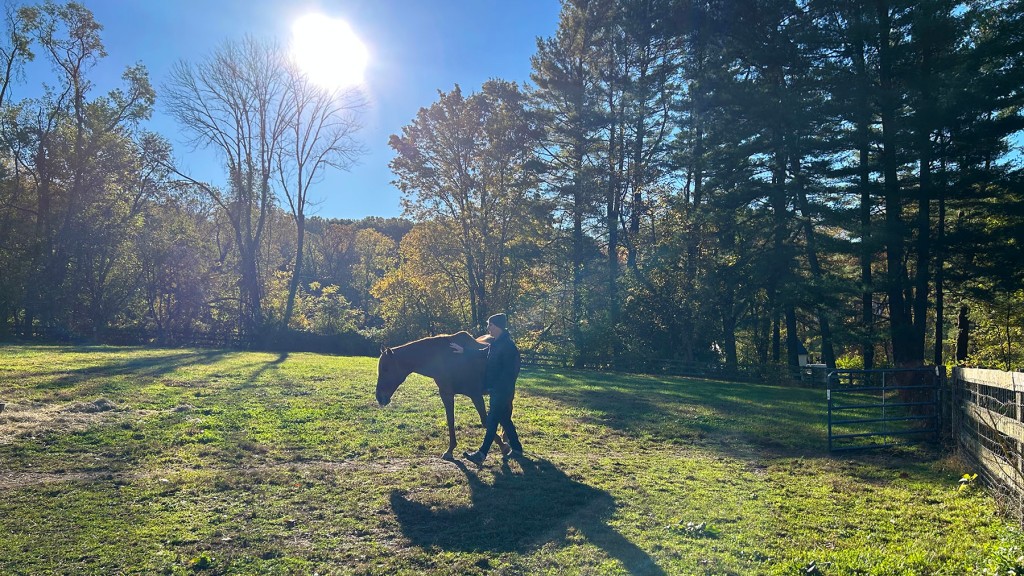
Photo of my brother, walking with my elder mare at home in Maryland.

